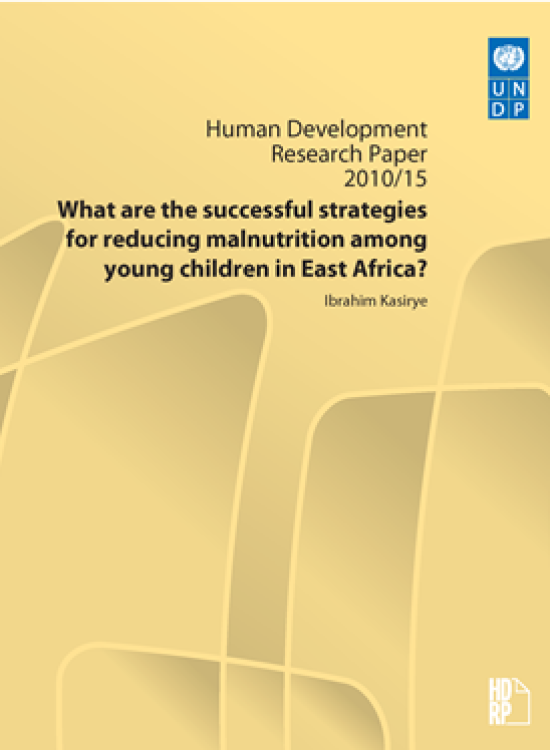What are the successful strategies for reducing malnutrition among young children in East Africa?

Download Report by Language
Document
hdrp201015.pdf
(376.67 KB)
Citation
Kasirye, Ibrahim. 2010. What are the successful strategies for reducing malnutrition among young children in East Africa?. New York.
What are the successful strategies for reducing malnutrition among young children in East Africa?
Posted on: January 01, 2010
We analyzed the role that health programs played in improving the nutritional status of children aged five years and younger in East Africa during a period when health policies aiming to reduce malnutrition were implemented. We used several waves of Demographic and Health Surveys over the 1992–2006 period for Kenya, Rwanda, Tanzania, and Uganda. Our results show that malnutrition rates fell substantially over the sample period but that some countries then registered reversals. This finding suggests that the implementation of nutrition policies was not consistent. However, the country-level results show that different factors matter in different countries. For example, maternal health is most important in Uganda and Rwanda. Furthermore, different levels of education matter for different countries. For example, in Kenya, only the mother’s post-secondary education is significant, but in other countries, it is important to address generally low education levels to improve child nutritional health. Overall, due to resource constraints, addressing the nutritional health of young children in East Africa will continue to rely on low cost approaches, such as nationwide vaccinations and maternal education, and not on programs like conditional cash transfer schemes, which have proved successful in addressing under-nutrition in wealthy and middle-income countries.